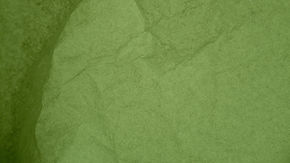FAQ - Aerated Cement Construction
1. What is aerated cement or cellular lightweight concrete (CLC)?
Aerated cement is a lightweight concrete that includes air bubbles (or foam) in the mix. It reduces density while maintaining sufficient strength, thermal insulation, and fire resistance. It's commonly used for blocks, panels, and lightweight fills.
2. What are the main ingredients in aerated cement?
Cement (OPC or blended), foaming agent (protein-based or synthetic), water, and optionally fly ash, sand, or other fillers.
3. How is the foam created and added?
A foaming agent is mixed with water and agitated in a foam generator. This foam is then mixed into the cement slurry to trap air within the mix.
4. What are the typical densities used?
300-600 kg/m³: Insulation or non-load-bearing fill
600-1200 kg/m³: Blocks or partition walls
1200-1800 kg/m³: Structural applications (with reinforcement)
5. How long does it take for aerated cement to set and cure?
Initial set: ~2-4 hours (can be sped up with CSA cement)
Final cure: 7-28 days for full strength
Steam curing or warm curing rooms can reduce curing time.
6. Is aerated concrete strong enough for structural use?
For load-bearing structures, higher densities (1200 kg/m³ and above) with reinforcement can be used. However, for most structural elements, it's paired with steel or used as infill.
7. What are the benefits of using aerated cement?
Lightweight, thermal insulation, fire resistance, lower dead load, easy to cut and shape, reduces cost of foundations.
8. What are the limitations?
Lower compressive strength than traditional concrete, requires careful foam control, may be sensitive to water if not sealed, requires curing time and protection from drying too fast.
9. What types of foaming agents are used?
Protein-based: Natural, more stable foam, better for blocks
Synthetic-based: Cheaper, less stable over long times
10. Can I make aerated concrete on-site?
Yes, with a foam generator, mixer, and molds or cast-in-place forms. It's widely used in on-site small home and prefab construction.
11. Can I use fly ash in aerated concrete?
Yes, Class F fly ash is commonly used as a partial cement replacement to reduce cost, improve work-ability, and reduce shrinkage.
12. What's the difference between CLC and AAC (Autoclaved Aerated Concrete)?
CLC: Made without high-pressure curing, poured into molds
AAC: Requires autoclaving (steam under pressure), factory-controlled
AAC has better strength and dimensional stability but is more costly to produce
13. How do you prevent cracks in aerated cement?
Use proper water-cement ratio, avoid rapid drying (cover during cure), use fiber reinforcement or additives (like polypropylene fibers).
14. Can you reinforce aerated cement?
Yes, fiber reinforcement (glass, polymer, basalt) or mesh reinforcement is used for structural applications.
15. Is it environmentally friendly?
Yes-reduced cement content, use of industrial by-products (like fly ash), and lower energy for production contribute to its eco-friendly profile.

FAQ
MORE FREQUENTLY ASKED QUESTIONS!
Who checks your manufacturing process?
We are monitored by Underwriters Laboratories, Southwest Research Institute, the United States Coast Guard and the DNV of Norway.
Are Classification Society Certification and USCG approvals available?
Yes.
Are test results available?
Yes. The material shall have been tested and reported by Underwriters Laboratories, Inc. (ULI) or Southwest Research Institute (SwRI) in accordance with the procedure of ASTM E119.
Where have you fire tested?
Underwriters Laboratories & Southwest Research Institute in the U.S.: the Loss Prevention Council & RINA in Europe.
How is the material applied?
We use a machine for the dry fiber and a liquid pump for the adhesive. Both products meet in a nozzle and are propelled against the surface at the same time.
Do your products contain any recycled material?
Yes, our fiber products are 100% recycled material.
Results of Surface Burning Characteristics?
When tested in accordance with ASTM E84, material exhibits the following:
FLAME SPREAD = 0
SMOKE DEVELOPMENT = 0
FUEL CONTRIBUTION = 0
Results of Air & Erosion Testing?
When tested in accordance with ASTM E859, material loss from finished applications shall not exceed .025g/sq.ft. Corrosion Resistance: When tested in accordance with ASTM E937, the material shall not promote corrosion of bare steel, shop-coated steel, or galvanized steel. When tested in accordance with ASTM C739, the material shall not promote corrosion of copper, steel, or aluminum.
Fungus Resistance: When tested in accordance with ASTM C739, the material shall not support the growth of fungus. Non-combustibility: When tested in accordance with ASTM E136, the material shall be non-combustible. Material shall be FREE OF ASBESTOS, asbestos contaminated vermiculite, chrysolite, amosite, crocidolite, actinolite, tremolite, or antophylite. Sprayed fireproofing manufacture shall provide written certification of no asbestos content upon request.
